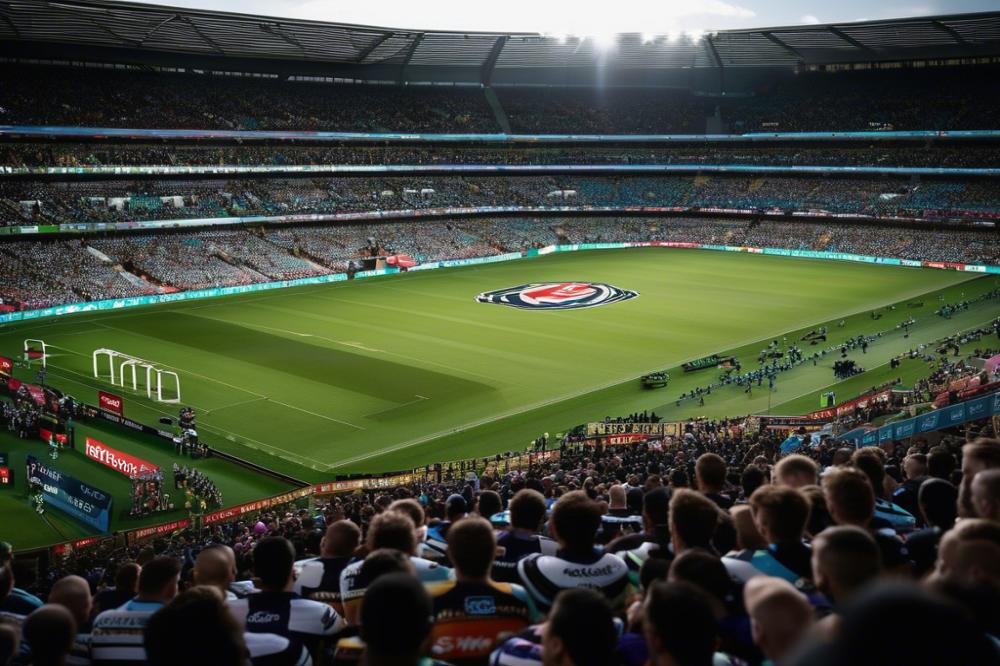Significance of Player Safety in NRL
In recent years, the spotlight on player welfare in NRL has intensified. Ensuring safety on and off the field is now an essential part of the game. The significance of NRL player safety is deeply rooted in the evolving rules and regulations aimed at protecting athletes. These range from strict concussion protocols to comprehensive head injury assessments. Each measure plays a vital role in preserving both immediate and long-term player health.
Why is this shift happening? The increasing knowledge of sports safety has raised awareness about the potential lasting effects of injuries. Especially concerning are head-related injuries. For instance, rugby league reforms have introduced new NRL rules focused on injury prevention. Changes in these areas highlight a strong commitment to player protection. In turn, these changes have reshaped how the game is played.
Consequences of these reforms can be seen in the style and pace of matches. NRL safety measures have influenced tactics and coaching strategies. This adjustment sometimes leads to a more cautious approach during gameplay. However, the overall spirit of the sport remains untarnished. Instead, it reflects a broader understanding of player welfare within rugby league policy.
Growing concerns around player health have pushed the NRL to act decisively. While the past may have overlooked some risks, the current approach shows a dedication to making the sport safer. The effects of these implementations stretch beyond the field, fostering an environment where athletes can thrive securely.
NRL player safety: An Overview

The National Rugby League (NRL) has long prioritized the excitement of the game over many other aspects. Yet, historically, the league’s approach to player safety was not as vigilant as it is today. Over the decades, rugby league, known for its intensity, saw numerous changes in its ruleset. The primary goal of these rugby league reforms was to slightly tweak the game play. However, protection for the players remained minimal.
Back in the day, players were often left to cope with injuries on their own. Head injuries, in particular, were a common occurrence. Few procedures were in place to effectively manage them. It wasn’t uncommon for athletes to continue playing immediately after an injury, which naturally put their health at risk. The scene was quite different; the concept of player welfare as understood today hadn’t fully materialized. As time passed, the call for a more robust approach to player health began to echo louder across the league.
Recent shifts in policy reflect an evolving understanding of both risks and necessary protections. The NRL recognized the importance of advancing player safety measures. In recent years, the league introduced the head injury assessment (HIA). This protocol mandates a thorough examination before a player can return to the field. It’s a significant change and an essential step forward in sports safety. Implementing stricter concussion protocols is another move that indicates the league’s commitment to injury prevention.
NRL rules have also been amended to place a higher emphasis on protecting players on the field. Tackling techniques and on-field behavior have come under scrutiny to further player protection. At its core, these changes are about enhancing both the well-being and safety of all players. The emphasis has been shifted from merely winning games to genuinely caring for those who play them.
Concussion Protocols and Head Injury Assessments

Concussion is a serious concern in contact sports. In the National Rugby League, addressing this issue has become a priority. The introduction of concussion protocols signifies a shift towards greater focus on player health. These protocols are essential components of reform in rugby league. They safeguard athletes from potential long-term harm.
Head injury assessments, a central aspect of these protocols, are detailed processes. Initially, when a player is suspected of incurring a head injury during a match, immediate action is required. A trained medical professional evaluates the athlete on the sidelines. This determines whether further evaluation is necessary. Such assessments are crucial for maintaining the well-being of players. Facilities are equipped and staff prepared to handle these situations at a moment’s notice. This approach illustrates how sports safety is evolving.
The NRL has implemented strict rules to reinforce the head injury assessment process. If a player shows signs of a concussion, they cannot return to play until cleared. This protects athletes by prioritizing their health above all else. The rules illustrate a commitment to player welfare, mirroring wider sports safety practices. It’s not simply about preventing immediate damage, but about preventing future repercussions. This dedication to player protection is integral to today’s sports environment.
The changes in NRL safety measures are profound. With an increased understanding of brain injuries, the NRL recognizes its role in injury prevention. These reforms mark a significant shift, placing player welfare at the forefront of the game. Procedural modifications reflect the league’s desire to advance player safety. The sport is adapting. Athletes now receive the utmost care to avoid dangerous conditions.
Reforming NRL Rules for Enhanced Safety
In recent years, the National Rugby League (NRL) has made significant strides toward enhancing player safety. Modifications to the rules have served as a beacon of progress. To prioritize health, changes address critical issues including head injuries. An area of particular focus remains the introduction and enforcement of a robust concussion protocol. This protocol demands immediate and thorough head injury assessment when any player shows symptoms during a match.
Enforcing strict guidelines for concussion can significantly mitigate risks. Over time, these NRL safety measures have evolved to reflect a growing awareness of player welfare. By incorporating head injury assessments, team management can better protect athletes from further harm. These assessments offer an objective evaluation of player condition, which is crucial for preventing long-term consequences.
Injury prevention extends beyond concussions. Rugby league reforms now also include stricter penalties for dangerous tackles. The introduction of technology, such as video referees, has helped officials make fair decisions. Such advancements enhance player protection by discouraging reckless behavior on the field. Enforcement of these NRL rules lessens the likelihood of serious injuries.
Players and coaches alike play a role in these improvements. A heightened emphasis on education ensures that everyone understands the regulations. This collective knowledge helps maintain a safer environment. By collaboratively prioritizing player health, the NRL underscores its commitment to sports safety. The new measures signify a cultural shift, emphasizing safety over competitiveness.
The Impact on Player Health and Welfare
In recent years, rugby league reforms have brought player health into sharp focus. The introduction of new safety measures aims to protect athletes at all costs. Now, the NRL’s emphasis on player safety leads to crucial changes in both strategy and play. These choices often reflect a need to prioritize health over aggressive competition.
Concussion protocol interventions are central to these changes. Enhanced head injury assessments facilitate quicker, more accurate diagnosis on the field. This approach significantly reduces the risk of severe long-term consequences for athletes. Moreover, such protocols represent the sport’s movement toward a culture of caution.
Balancing competitive play with player welfare remains a complex issue. Traditionalists argue that tough, physical play defines rugby league’s unique character. However, modern NRL rules demand injury prevention as a priority. Players and coaches must adapt, creating strategies that minimize risks without diluting the excitement of the game.
For many, these NRL safety measures have introduced much-needed peace of mind. Advanced player protection not only safeguards careers but also ensures personal safety beyond the field. The shift aligns with general trends in sports safety around the world. It indicates a broad acknowledgment that athlete well-being must come first.
Undoubtedly, changes in player welfare protocols have made an impact. This redefined landscape puts athletes’ health as the focal point. As a result, sports and medical professionals continue to collaborate closely. Together, they work to develop innovative methods that further enhance player protection within the game.
The Role of Rugby League Reforms
Rugby league reforms have been instrumental in prioritizing player safety. In recent years, changes to NRL rules have focused on protection and injury prevention. These guidelines are reshaping the landscape of the game. What are the initiatives driving this transformation?
First, consider the concussion protocol. This system is key to managing head injuries. Players who experience head impacts undergo a head injury assessment during matches. Such diligence helps reduce the risk of serious long-term health issues.
Moreover, player welfare initiatives extend beyond concussion rules. Multiple policies now emphasize overall player health. Importantly, training sessions now incorporate new techniques aimed at minimizing harm. Safer playing environments contribute to sports safety, a central concern for all involved.
Additionally, NRL safety measures, such as stricter enforcement of tackles, play a vital role. Tackling practices have been updated to prioritize safety. Infractions are more likely to lead to penalties, promoting a safer style of play. This affects both how the game is played and perceived.
Furthermore, rugby league reforms emphasize education. Teams receive guidance on best practices for player protection. Awareness campaigns highlight risks associated with head impacts. These efforts reflect a broader commitment to safeguarding athletes. Such educational initiatives are crucial in fostering a culture of safety.
Challenges in Implementing Safety Measures
Implementing new safety measures in the NRL presents numerous challenges. Changing entrenched habits requires time. Old playing styles clash with modern protocols. Adapting to new NRL rules for player safety can prove difficult for athletes who have trained a lifetime under different standards.
Concussion protocols stand at the forefront of these reforms. Recent focus on head injury assessment sparks debate. Some players embrace this step towards better player welfare. Others fear it might dilute rugby league’s raw intensity, arguing that too many stoppages disrupt game flow.
Public response is mixed as well. Many fans support increased player protection, favoring long-term health over short-term thrills. However, a vocal group worries changes will erode the sport’s inherent toughness. Injury prevention should not compromise the sport’s character, they argue.
Meanwhile, ensuring compliance with these safety measures is logistically tough. Match officials must balance consistent enforcement with the game’s pace. Judgment calls on the field can vary, making consistency difficult to achieve. This unpredictability frustrates players and spectators alike.
These reforms indeed signal a shift in sports safety priorities. However, the path forward is rife with hurdles. Players’ health remains a key focus, but balancing tradition with player welfare is no small task for the NRL. Enhanced safety measures are a step in a new direction, challenging the sport to evolve while maintaining its spirit.
Transforming Player Safety: What Lies Ahead?
As the NRL continues to prioritize player safety, the landscape of the sport is undeniably evolving. Changes in policies and practices are designed to de-emphasize harmful impacts and create a more secure environment. By revising the concussion protocol, the League has emphasized safeguarding players’ immediate and long-term health. This shift marks a significant turning point.
The head injury assessment is now an indispensable aspect of player care. It represents a commitment to accountability and precaution on the field. This focus on preventive measures means games might be conducted more cautiously. The excitement of rugby league should not come at the expense of well-being.
The future implications for the NRL and its players are profound. Implementing stringent safety regulations may indeed slow down certain aspects of play. Yet, it promises a longer career span for athletes. Players are likely to enjoy healthier lives post-retirement. Enhanced protection might also encourage younger talents to pursue rugby league.
Transformation within any sport requires dedication and adaptation. This initiative by the NRL could inspire global sports organizations to reassess their stance on player safety. Ensuring that players are protected and valued above the thrill of aggressive gameplay offers a promising future. All stakeholders, from fans to players, stand to benefit from these evolving policies.



